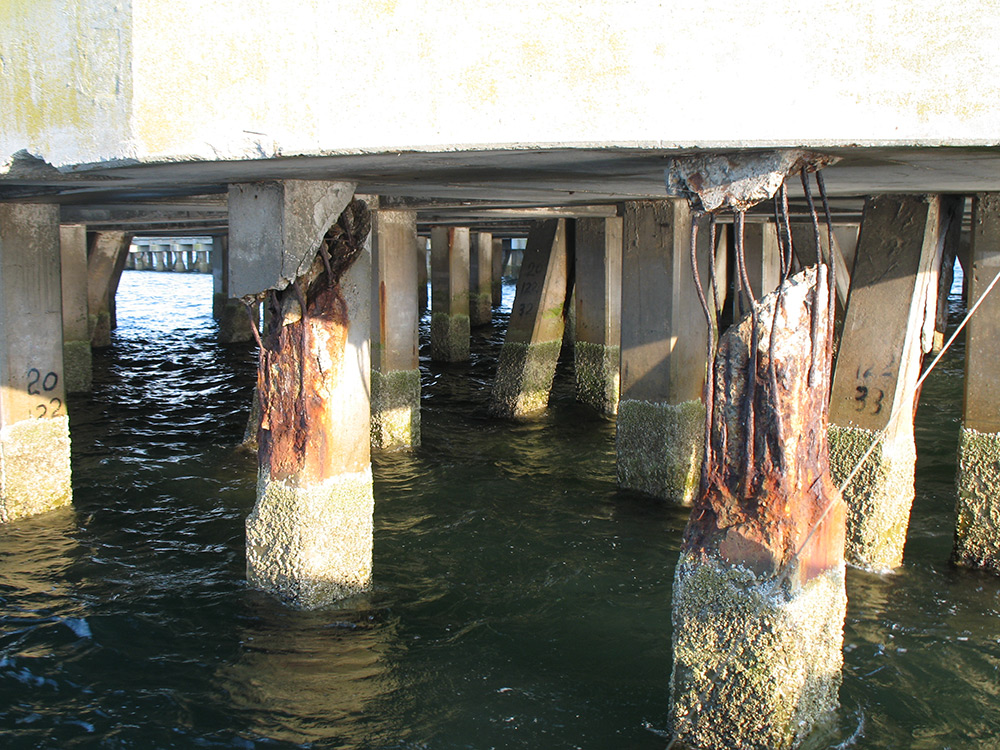Composite vs. Concrete
That’s how the concrete crumbles: why composite pilings last longer

Cosmetic and structural fallibility: While concrete when it’s first poured can initially offer a strong structural base, the corrosive properties of salt water begin eating away at concrete pilings the moment they’re installed. “Salt water will eventually take its toll,” explains Mark Pearson (link to bio when live). Damage escalates as small chunks and unsightly spalls lead to larger holes that expose more surface, enabling more damage. The fiberglass composite used in Pearson Pilings withstands high salinity to avoid cosmetic damage and structural collapse.
Exposed rebar rusts: As the concrete crumbles away, the damage exposes the reinforcement steel, or rebar, within the piling. Vulnerable to rust, the damage to these reinforcements undermines the integrity of the piling, and in turn, the whole structure. Resistant to rot, rust and corrosion, Pearson Pilings last generations.
Heavier, harder to use: Due to their weight, concrete pilings can become unwieldy and difficult to maneuver and work with, especially compared to their composite counterparts. Concrete pilings take longer to cut, and can be difficult to drill while avoiding the rebar within. Lightweight and easy to cut, transport and install, Pearson Pilings are becoming the preferred material for contractors and engineers.
